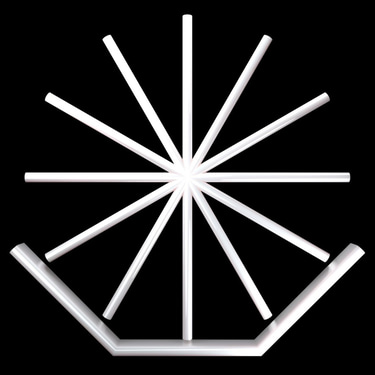Madeleine Cichy
Sarah Chess talks with Cichy regarding sculpture making and Polish baked goods.
11/16/20184 min read
Madeline Cichy is a Seattle-based artist and recent graduate of the MFA program at Cornell University. Cichy’s work explores how we process, think and act through our bodies.
Sarah Chess: If you could describe what your art process means to you in 3 words, what would they be?
Madeline Cichy: Pick at yourself.
SC: A lot of your sculptures present as objects that are waiting to be activated/engaged with. What are some themes that you currently exploring?
MC: I think a lot about the affect that buildings, environments, and objects have on us. The material world, mouth feel of food, shape of a door handle, etc., all exert forces upon us. Sculptures that anticipate their embodied viewer underscore the capacity of objects to affect people. My work plays with material and covering so that the act of seeing leads to an internal thought about touch, weight, attraction/repulsion. So, in that way material exploration is important. If I had to pin down a theme that this relates to I would say the processes of ingestion and absorption.
SC: Tactile, fluid and textured are the first words that come to mind when looking at your work— many pieces resemble some sort of amorphous body or creature. How did you arrive at your current style/approach to using materials?
MC: My handling of materials is informed by painting. With painting there are fewer technique rules (or at least the way I paint) – you put medium on surface. I carry that thinking over to sculpture, even though you have to deal with the material laws, binding processes, and the drying, cracking, splitting, falling over of things on a much bigger scale. But I’m anti-technique. Initially, this frustrated me. Everything kept breaking down, collecting dirt and dust. I made six large armatures, some of them over 8ft tall, out of pipes that I covered in dough I mixed with an industrial mixer in my studio. The final exhibition space was much drier and warmer, and the pieces immediately baked and began cracking into pieces onto the floor.
I’ve learned to embrace and harness this mutability. I like to keep aspects of the work open to change. Materials could melt, or stay soft to receive a footprint. I go towards materials that are simulated, cheap and abundant (between hardware and Home Ec.). I misuse these materials in an attempt to make them transcendent so that an unusual familiarity connects to viewer while slightly confounding them.
SC: While sculpture is your main medium, you also have done some beautiful drawings/watercolors of cell/organism-like patterns. Is drawing/painting still a part of your practice? If so, how/why?
MC: For me, drawing and sculpture have an economic relationship. Drawing is a flexible and unencumbered tool in making sculpture, and is reinforced by the natural flow from idea to hand to page. I don’t think you can exactly call it lazy, but I don’t like to do labored drawings if I’m just going to make a sculpture by feeling it out. I make drawings before making some sculptures, but they aren’t beautiful. Although, the drawings do inform the sculptures- the thinness of a 3D piece is like a drawing in space. Once these leggy objects are painted or covered, they become like paintings too. Using sculptural processes to make paintings (slicing clay logs for Hippy Spew Hole) or making sculptures that resemble drawings (Therapod) brings me to a place where I keep getting new ideas about form. The paintings you mention sought to be sculptures, and now I’m working through those problems from a gooey material point of view.
SC: If you could go to dinner with one artist, dead or alive, who would they be? What’s a question you would ask them?
MC: One of my teachers or friends: Carl Ostendarp, Douglas Ross, Richard Zimmerman, or Diana Clarke. I haven’t seem them in awhile. A question I would pose would be: what are you thinking about that I’m not getting at? I would also ask if they had any book recommendations.
SC: Lastly! What cooking recipe (that you like to make!) most represents your art?
MC: Bajaderka is a confection you can buy at any bakery in Poland. As bakers work, they wipe all the crumbs and remnants from other cakes into a bowl below their work surface. At the end of the day they pour almond liqueur into that bowl full of offcuts made from other desserts and press it into a ball. Maybe they’ll top it with coconut flakes. I’m cheating here, because this isn’t a recipe. But I like that it can’t be made directly; it requires recycling, miscalculating, and then pouring liqueur all over those mistakes.
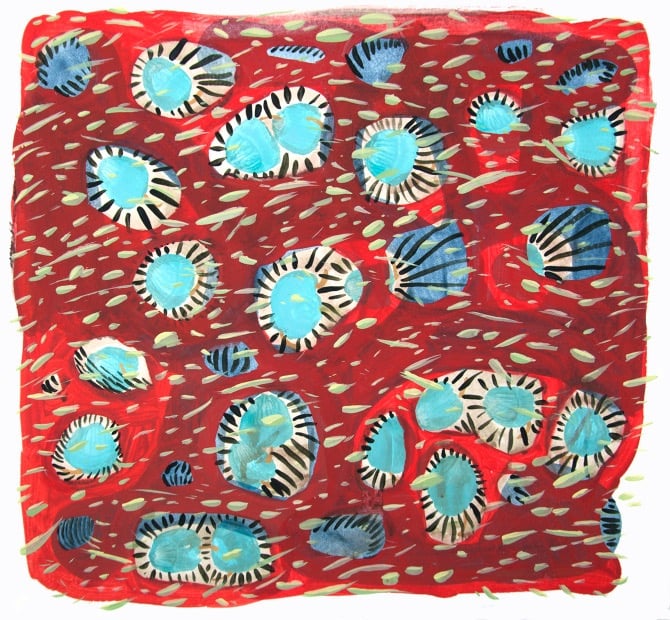

Deposit (2014)
Watercolor on paper, 12 x 12 in


Rods & globs (2014)
Watercolor and ink on paper, 23 x 22 in
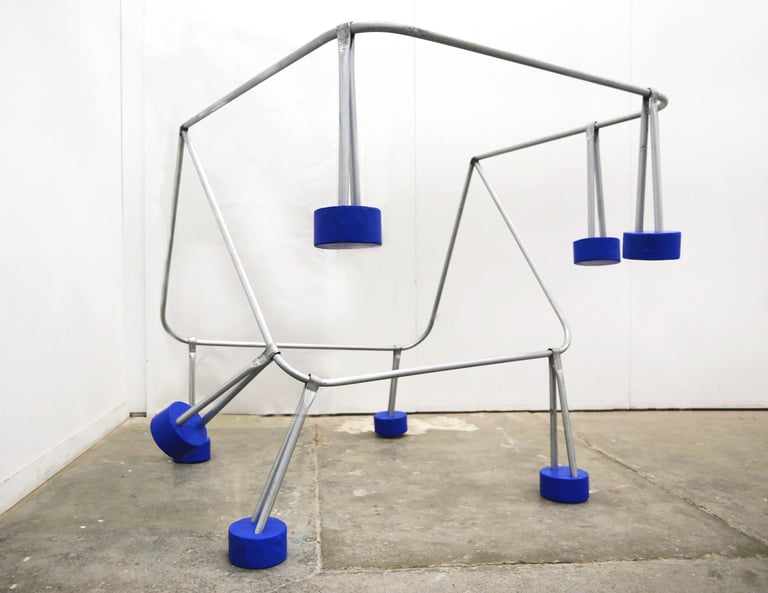

You can’t find this on the internet (2016)
Conduit, foam, plasticine, 5 x 4 x 4 ft
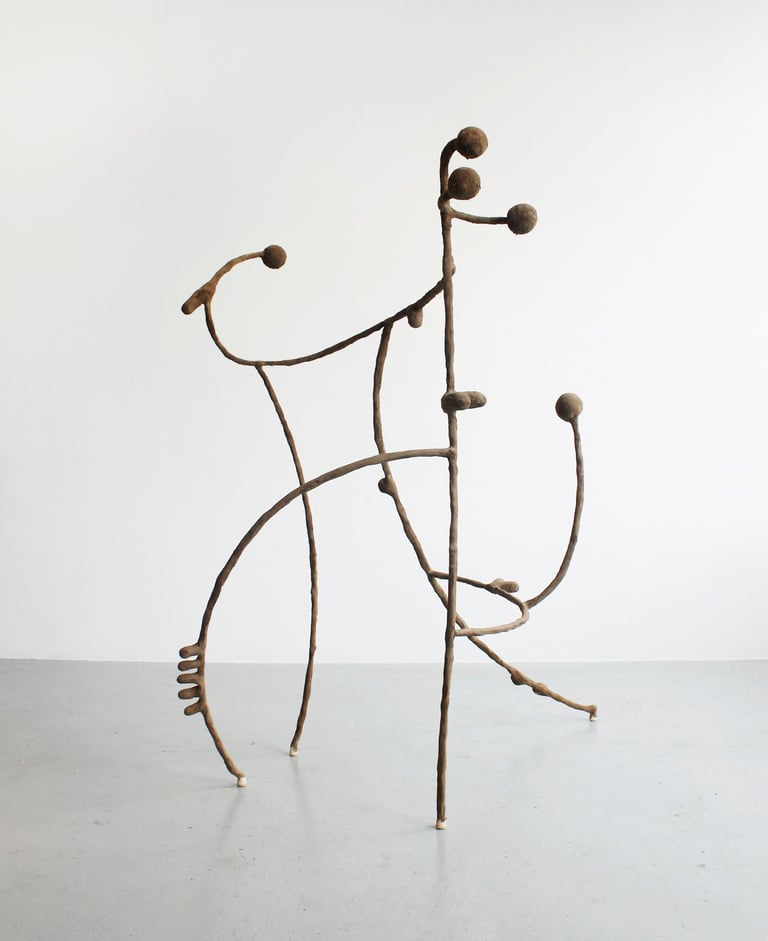

Therapod (2017)
Steel, epoxy, sand, rubber caps, 64 x 74 x 30 in
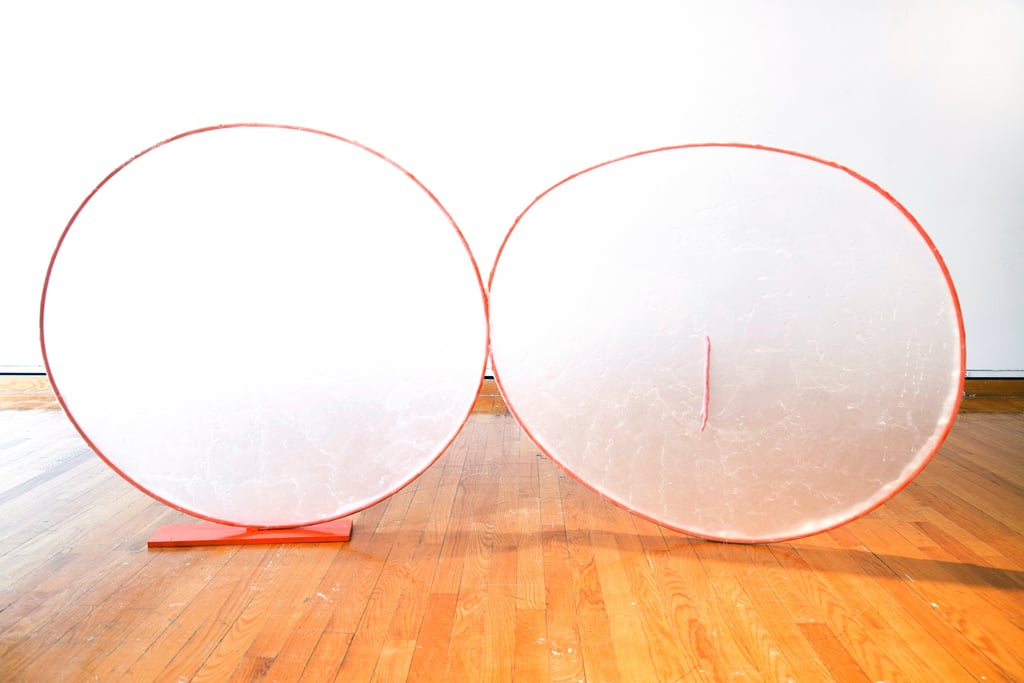

Leech (2017)
Steel, enamel, plasticine, mulberry paper, glycerin, 76 x 36 x 7 in
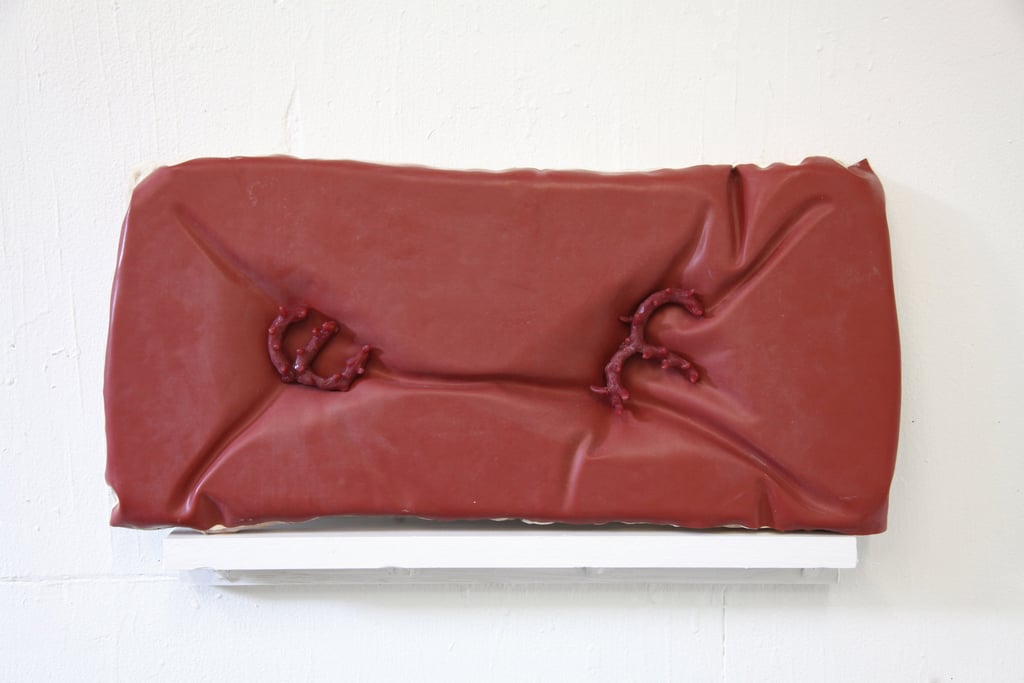

Gummy Space (2017)
Plaster, rubber, wax, 6.5 x 13 x 1 in

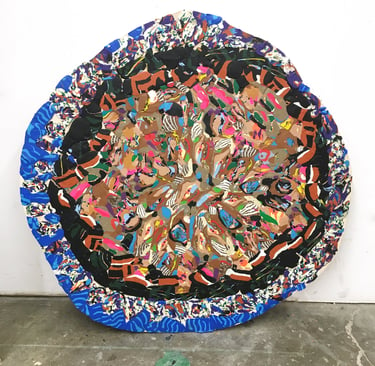
Hippy Spew Hole (2017)
Plasticine, wood, 38 x 40 x 1 in
